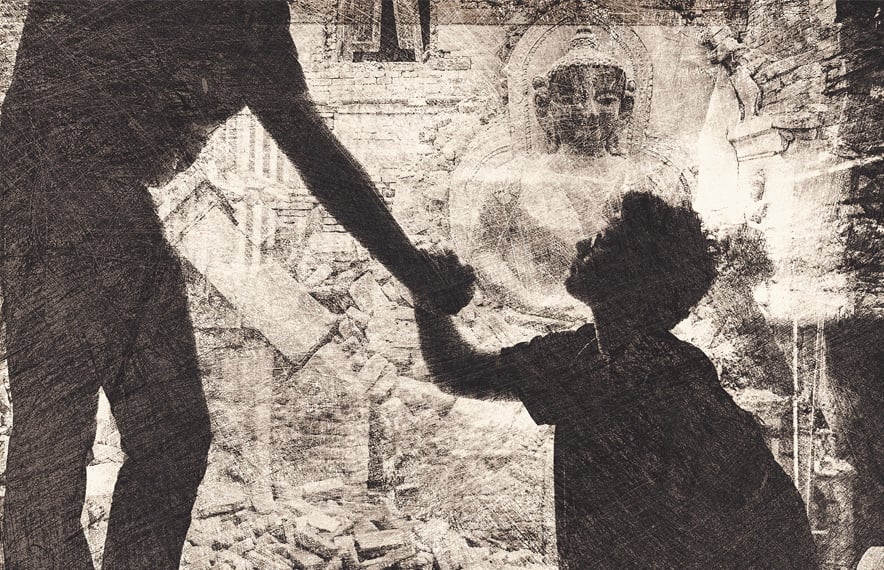Textbook Rescue
Mention study abroad programs, and many immediately think of college students enjoying once-in-a lifetime experiences in places like England, France, or Italy. But those western European tourist meccas are not the only countries that host foreign students. Students also travel to study in further flung countries—such as Nepal.
When shattering disaster strikes, such as the 7.8 magnitude earthquake that hit Nepal earlier this year, elaborate around-the-clock rescue and recovery efforts are needed to extract those students and get them to safety.
To get a closer look at the complex arrangements these operations entail, Security Management spoke with George Taylor, vice president of global operations for iJET International, an integrated risk management solutions provider, about rescue operations the company undertook in Nepal after the earthquake.
For the rescuers, time is of the essence in these operations. Taylor heard about the earthquake right after it struck Nepal. “I received a phone call at zero dark thirty, whatever it was,” he says. Within 47 minutes, he had raised his incident management team’s global readiness level and put them on alert. First responders in Nepal were put on standby; iJet’s in-country aviation partners were told that their support might be needed. “It was evident that there was a massive scale of destruction,” Taylor says.
On the ground, a few of the most crucial tasks included performing rapid reconnaissance, assessing airport readiness, setting up safe havens, and monitoring communications. The country’s rugged landscape, however, complicates rescue efforts; Nepal’s mountain ranges are notoriously perilous—the airport near Mount Everest is considered one of the most dangerous airports in the world.
Reconnaissance was necessary for ascertaining the impact of the earthquake on the country’s terrain, Taylor says. Being able to move students via a network of functioning roads was vital for rescue operations, so the team surveyed roads to see which ones were working and which were damaged or destroyed. Checking the structural integrity of key buildings was also important, and phone calls to building administrators could not be relied on. For example, a hotel manager might say that damage to the structure was minimal, but an on-site visit would then reveal a collapsed wall. “We could not trust that information,” he says.
The team also had to sort out conflicting reports about Tribhuwan International Airport, located on Kathmandu’s outskirts. Initially, the airport was kept open, but many flights soon became delayed amid reports of panic situations and mile-long lines.
Delayed flights, as well as the country’s difficult terrain, are both reasons why establishing safe havens proved to be critical. Some rescues occurred deep in the mountains, and safe havens served as interim resting areas if a student had to be moved from a crisis zone to safety. Clients stranded at airports could be taken to a safe haven, then returned to the airport and rebooked.
As is true with most rescue operations, electronic communications played a huge role in Nepal. In this area, however, one possible negative factor loomed large: Nepal has some of the slowest download speeds in the world. “We knew immediately we could have problems,” Taylor says.
Nonetheless, the team set up a communications operations center, which was advertised on social media. This immediately drew calls. “People out of the blue started communicating,” Taylor says. In terms of telecommunication signals, text messaging is generally more reliable than voice calling, so when calls came in, the team would obtain as much situational information about the caller as they could, then switch to communicating by text. The goal was to establish an electronic lifeline for students, even for those who were stranded in remote villages in the mountains.
And, occasionally, Taylor fielded calls from a student’s parent. Not surprisingly, parents were often “frantic and nervous,” especially if they had not been able to get information for a day or two, he says. Taylor notes that reassuring parents is not always successful. “It can be a little heated,” he says of such calls. “You let it blow over.”
In the end, the groundwork and communication efforts paid off. The iJet team evacuated roughly 40 students within two weeks after the earthquake hit. Some of the rescues were dramatic, multiday affairs.
For example, one student, stranded in a remote mountain region, was evacuated by helicopter to the nearby village of Lukla. “She was way, way out in the Himalayas,” Taylor says.
At Lukla, the team made a plan with the student via text messaging; the next day she was transported on a 100-plus-mile journey via vehicle convoy to Kathmandu. With airlines at the airport overwhelmed, she spent the night in a Kathmandu hotel until she could fly home the next day. According to iJet, the team maintained a presence at the airport until 30 minutes after flight departure to ensure that the plane was able to clear Nepal airspace.
Another operation involved a student stranded without a cell phone in the village of Dhulikhel. Through note passing with a nearby student, iJET was able to initiate contact with her, and then establish communication via another student’s phone.
The team set up a safe haven for the student with a local expatriate until an evacuation plan could be implemented. Although she had already bought a plane ticket home, local roads were compromised by a landslide, so she was not able to make her original flight. The team sought out alternate routes to transport her to the airport the following day, with a new ticket.
Given what these operations entail, iJet representatives said it was not surprising that a university administrator who was evacuated from Nepal delivered the following message to the company after his evacuation: “Despite it being a pleasure working with you, I hope you understand when I say that I hope we never have to work together again.”
